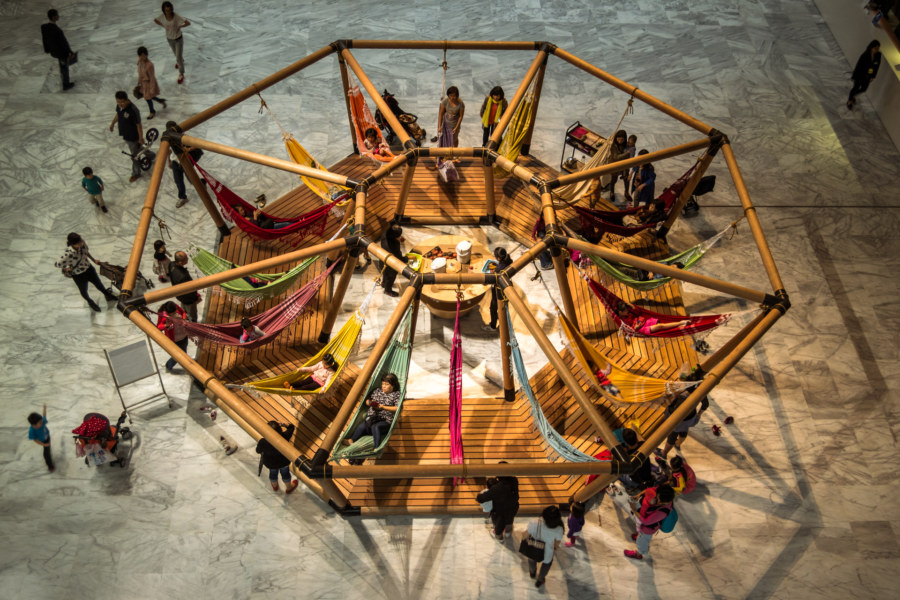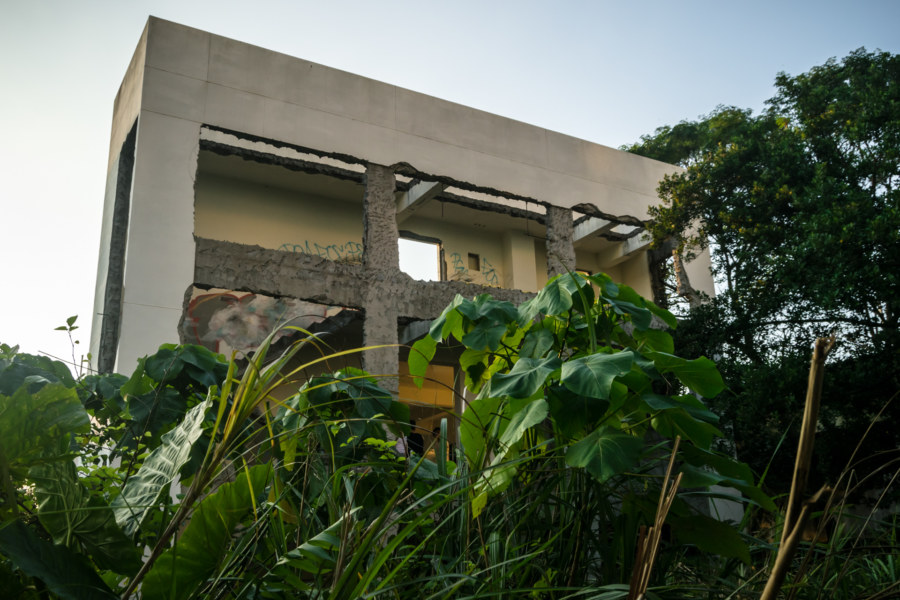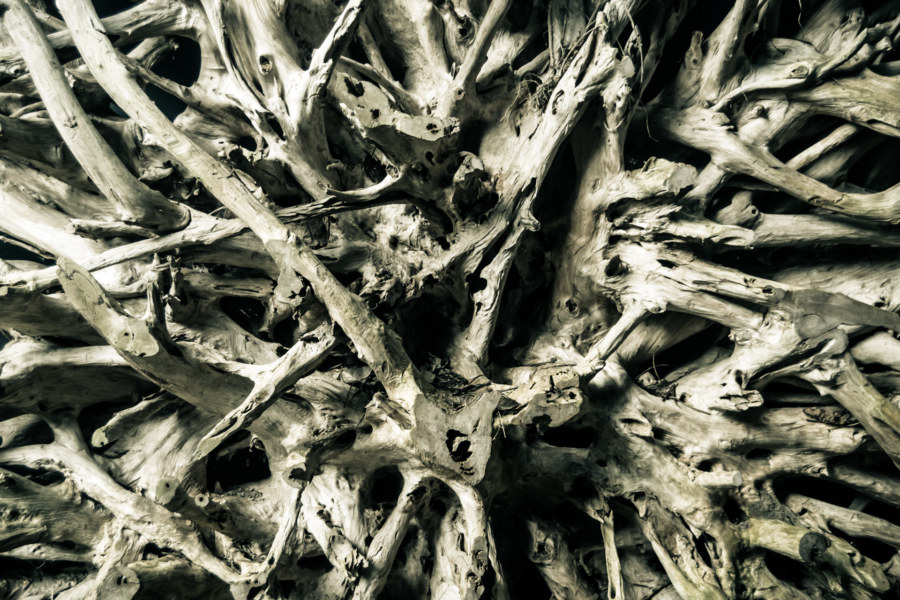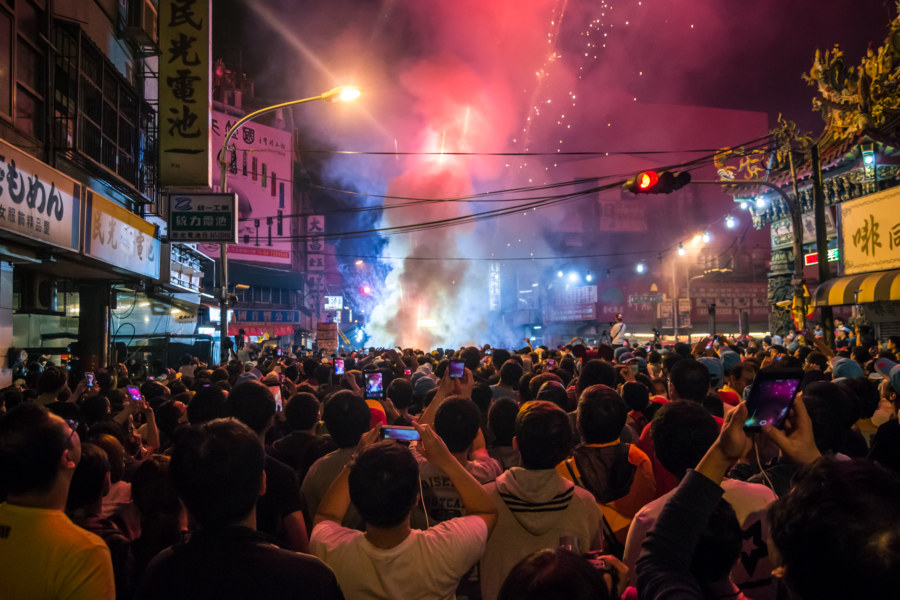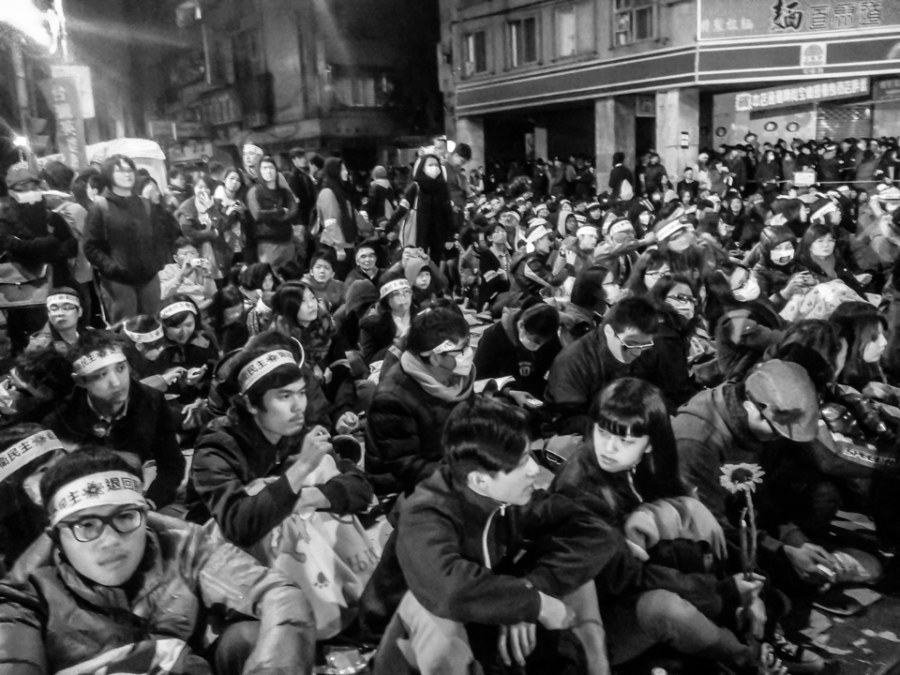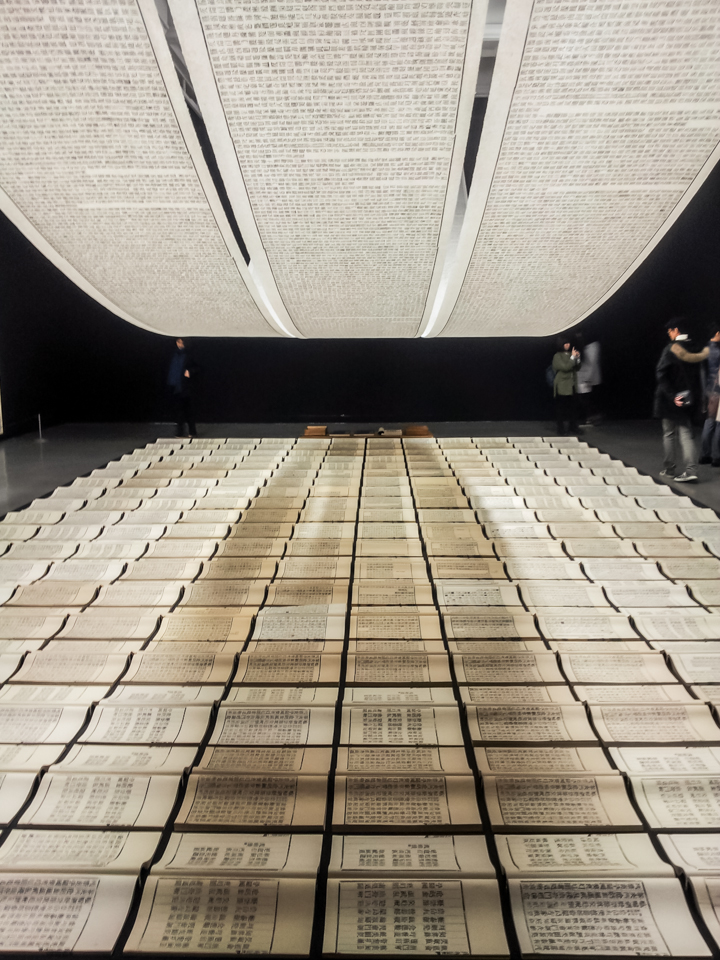Curated by Nicolas Bourriaud, the Taipei Biennial 2014 was held at the Taipei Fine Arts Museum (臺北市立美術館) in Zhongshan from September into the early part of the new year. The theme is “art in the age of the anthropocene”, the current geophysical epoch defined by humankind’s enormous impact on the natural world. From the curator’s notes: this exhibition is organized around the cohabitation of human consciousness with swarming animals, data processing, the rapid growth of plants and the slow movements of matter
. I am no serious critic but I certainly appreciate thought-provoking art when I see it. Since I haven’t any expertise in this area I’m mostly going to let the photos speak for themselves, however incomprehensible that might be. Much like the Xu Bing retrospective it was an inspiring experience so I’d like to have a record of it here on my blog.
Events transpire in real time. Catch them while you can.
Adjacent Terms
Hongshulin Whiteloft 紅樹林白厝
Yesterday I seized an opportunity to combine two of my passions, the exploration of abandoned places and appreciation of underground electronic music, at a one-off techno party titled The Whiteloft (白厝). From the event description:
The Whiteloft was originally an abandoned villa where only wild dogs go to sleep. Buried deep in silver grass, just alongside the Golden Waterfront of Hongshulin, Taipei, the building hovers the Interzone between metropolis and mangrove jungle. Humdrum pedestrians seem oblivious of this colossal fortress: its skeleton rusted and exposed, leftover building materials strewn astray. Despite its shroud of mangrove leaves, the building appears raw and naked. We tried to find historical records about this building, but found nothing but total blankness, hence the name The Whiteloft.
In the Realm of Primitive Senses
Sunday afternoon in the mountains of Shilin, not far from Yangmingshan, about 200 people gathered for The Forester’s Party (牧神的遊戲) at Siu Siu (少少原始感覺研究室), a lab of primitive senses built on a steep south-facing slope. The aesthetics of the space: slate grey walls, wooden planks underfoot on the dance floor, a round black mesh canopy overhead screening the forest without impeding the flow of fresh mountain air. Clean, modern, minimal, but also rustic—an exceedingly comfortable combination of form and function. The finest in dub techno wafting out of the speakers, one particular song selected by Al Burro capturing the mood of the afternoon with perfect ease, Nthng’s 1996.…
Mazu Mania in Changhua City 媽祖繞境
My last night in Changhua City was surprisingly eventful thanks to a fortunate accident of timing. Earlier in the day I had noticed an unusual uptick in the amount of activity on the streets while cycling around. Banquet tents had been setup on major thoroughfares, police were standing at major intersections, scooters flying yellow banners were buzzing around like angry hornets, and the air was filled with a palpable sense of expectation and excitement. After an early supper next to a coffee shop I often work at I approached to one of the staff (who speaks passable English) and asked, “What’s going on?” Their answer, “It’s the…” Trailing off, hands aflutter, obviously searching for the right word—and then: “Mazu!”
Remember the Sunflowers
A year ago the Taiwanese people stood up to their elected government and halted the passage of a controversial free trade agreement by occupying the Legislative Yuan. This act of mass civil disobedience was soon christened the Sunflower Student Movement. I was living in Taipei when it all went down and visited the protest on several nights to watch history unfold. I am not a professional photographer, political observer, nor journalist, so please excuse the poor technical quality of the images and lack of elaboration in this gallery. It is my hope that these pictures capture something of the spirit of those wild, uncertain nights when anything seemed possible.
Xu Bing Retrospective in Taipei
In March of 2014 I went to see the Xú Bīng (徐冰) retrospective at the Taipei Fine Arts Museum (台北市立美術館), easily my favourite gallery space in Taiwan. Xu Bing is a Chinese artist working mainly with representations of language, particularly in the context of interactions between East and West. I first discovered him through an article about character amnesia that discussed A Book From The Sky (天書), a work that continues to capture my imagination.
I should warn you: I’m not an art critic and these photos were shot on a cruddy smartphone. If you’d like to peruse something much more informed and professional about this exhibition I recommend perusing the curator’s statement, English language reviews here, here, and here, or this virtual tour. What follows are a few fleeting impressions of my own from a few hours in Xu Bing’s world.
